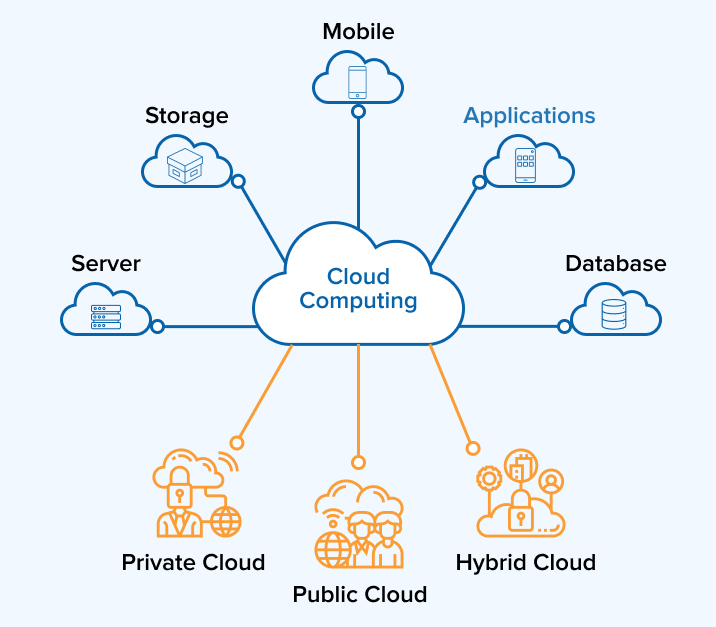Simplify Your Framework With Cloud Provider
As companies browse the ever-evolving landscape of innovation and information administration, the role of cloud services in simplifying facilities has come to be increasingly popular. Just how can businesses properly browse this transition and really open the potential of cloud services for simplifying their facilities?
Advantages of Cloud Solutions
Cloud solutions supply a streamlined approach to handling IT framework, supplying companies with adaptability, scalability, and cost-efficiency. One of the vital advantages of cloud services is the scalability they offer.
In addition, cloud solutions eliminate the requirement for services to purchase expensive equipment and software. This cost-efficiency is a significant benefit, particularly for small to medium-sized ventures seeking to lessen in advance prices. By utilizing cloud services, businesses can access top quality IT resources without the hefty cost connected with traditional infrastructure configurations.
In addition, cloud services offer businesses with the versatility to access their data and applications from anywhere with a web connection. This degree of access improves collaboration among groups, allows remote work, and boosts general performance. The flexibility used by cloud solutions equips businesses to adapt swiftly to transforming market conditions and consumer needs.
Price Cost Savings and Scalability
In addition to the functional advantages highlighted earlier, the integration of cloud solutions right into a company's infrastructure generates substantial cost savings and improved scalability. Cloud solutions supply a pay-as-you-go model, enabling organizations to range sources up or down based upon current requirements, consequently preventing the prices connected with preserving excess capability. This versatility allows firms to adjust swiftly to changing demands without incurring unnecessary expenses.
Moreover, cloud services get rid of the requirement for in advance investments in software and hardware, minimizing resources expenditures. Operating costs are likewise lessened as business no more require to handle and keep physical servers, resulting in reduced power intake and IT staffing prices. Furthermore, cloud services provide automatic updates and upkeep, making sure that the facilities remains current and secure without needing manual interventions.
Enhanced Protection Measures
Applying rigorous safety and security procedures is critical when incorporating cloud solutions into a firm's framework to guarantee and guard sensitive data compliance with sector guidelines. Cloud solution companies offer enhanced protection attributes such as data encryption, firewall security, and multi-factor verification to alleviate cybersecurity risks.
Moreover, regular protection audits and compliance evaluations help make sure and determine susceptabilities adherence to sector requirements. Firms can also take advantage of features like computerized safety updates and real-time threat surveillance given by cloud provider. By focusing on protection measures and staying aggressive in dealing with possible threats, businesses can with confidence take advantage of cloud services while protecting their important information from unauthorized access or violations.
Transitioning to Cloud Facilities
To efficiently integrate cloud solutions into a business's infrastructure, an organized strategy that addresses the shift towards cloud-based services is important. Transitioning to cloud infrastructure involves mindful planning and implementation to guarantee a smooth movement procedure. The initial step is to evaluate the existing facilities and establish which applications and next page systems appropriate for movement to the cloud. This analysis ought to think about factors such as data sensitivity, compliance demands, and performance demands.
As soon as the assessment is complete, a migration technique should be created. This approach must outline the timeline, sources, and responsibilities for relocating each component to the cloud. It is essential to communicate this strategy plainly to all stakeholders to ensure alignment and lessen interruptions during the shift.
During the movement screening, tracking and procedure are vital to determine and address any issues without delay. Regular checkpoints ought to be established to track progress and make necessary adjustments. Furthermore, training for workers on utilizing cloud solutions should be supplied to make sure a successful change and make best use of the advantages of the new facilities.
Finest Practices for Cloud Adoption
Effective adoption of cloud solutions pivots on the strategic placement of service objectives with technical abilities and business readiness. To make sure a smooth shift to the cloud, companies must begin by carrying out an extensive assessment of their existing infrastructure and determining which work are best fit for cloud movement. It is important to involve vital stakeholders from different departments in the decision-making procedure to gain buy-in and address any kind of issues beforehand.
One more finest technique for cloud check out here adoption is to focus on security and compliance. Organizations must meticulously evaluate the safety and security actions offered by cloud company and ensure that their data is secured according to industry requirements and governing requirements. Executing robust data file encryption, accessibility controls, and normal security audits can aid reduce dangers connected with cloud fostering.

Conclusion

As organizations navigate the ever-evolving landscape of technology and information management, the function of cloud services in streamlining framework has become significantly famous - cloud services press release. How can organizations successfully navigate this shift and truly open the possibility of cloud solutions for streamlining their infrastructure?
Cloud services provide a structured strategy to managing IT facilities, supplying services with versatility, scalability, and cost-efficiency. By utilizing cloud services, services can access high-quality IT resources without the hefty price tag associated with conventional facilities configurations.
To make sure a smooth shift to the cloud, organizations should start by conducting an extensive assessment of their present infrastructure and recognizing which click to investigate workloads are best suited for cloud migration.